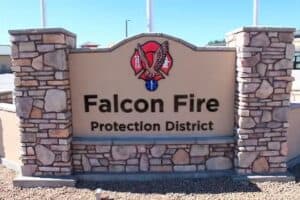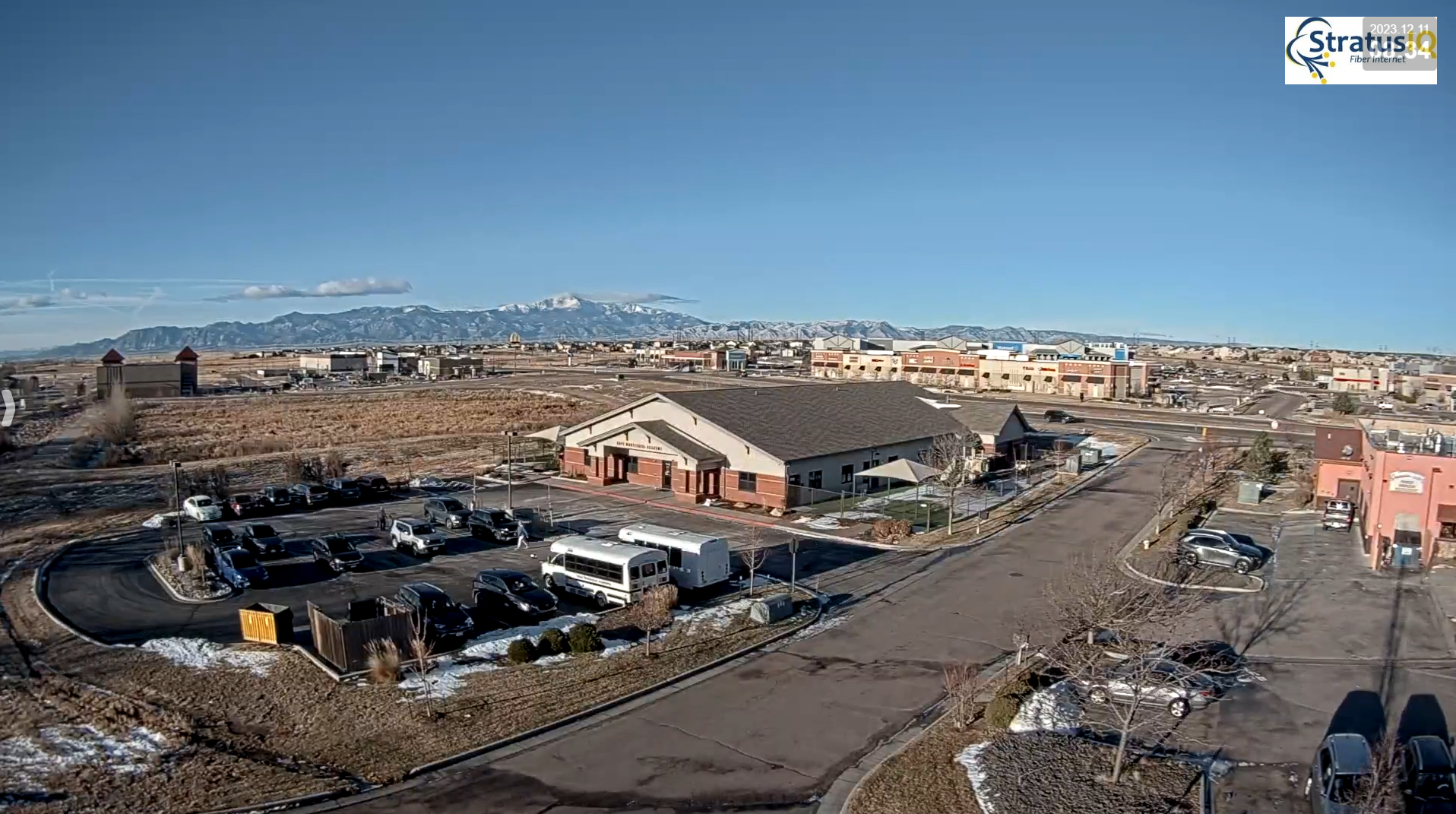The Falcon Fire Departmentís first alarm sounded in July 1975 for a grass fire ignited by a passing train behind the Falcon campground. However, when the call came in, the departmentís first fire engine wasnít quite ready. Volunteers had to throw hose into the bed and were attaching emergency lights, even as the truck rolled out the door. Vern Kauffman drove the 1948 Dodge, a retrofitted former weapons carrier, on its maiden run.ìAs I pulled out of the station, Ken Wulf was twisting the wires together to make the lights work,î he recalled with a grin.Kauffman and his wife, Esther, were among a group of people who founded the Falcon Fire Department and literally built the organization from the ground up. Volunteers raised money to purchase equipment, build a fire station, train and respond to emergency incidents; all while holding down jobs and raising families.From mule barn to fire stationThe Falcon Fire Department was initially housed in a barn near Highway 24 and Cottontail Drive, which once housed mules from Fort Carson. The Kauffmans described austere conditions: Truckloads of manure had to be hauled away; there was no running water or restroom in the barn; and the only heat came from a space heater in a small office.Eventually, the volunteers acquired property at the corner of Highway 24 and what is now Old Meridian Road. They used materials salvaged from buildings in Colorado Springs to build a fire station with heat, running water and room to grow. Part of the construction effort entailed scraping mortar from the used blocks so they could be reused. Esther Kauffman said, ìI chipped off a lot of mortar. The women would do what we could.îA womanís place in the fire departmentWomen were part of the Falcon Fire Department from the beginning, and not just chipping mortar or cooking for fundraisers. When it came to putting out fires or responding to medical emergencies, Vern Kauffman said, ìThe guys were working, so a lot of times it was up to the women.î He told of one daytime structure fire where only the chief and four women were available to respond. ìThey did just fine,î he said.Responding to daytime calls meant that mothers sometimes had to take their children with them. Esther Kauffman recalled responding to a fire at a goat barn with her young daughter in tow. ìI always had to take her with me,î she said. ìIt was hard trying to work and keep an eye on her in the car at the same time.îMembers of the womenís auxiliary supported fundraising efforts. Phyllis Anderson, another early volunteer firefighter, said they served hamburgers, sloppy joes and home-baked pies at farm sales and auctions, among other activities. She also described community ìFun Days,î with square dancing, a dunk tank, an egg toss and a wood-sawing contest. Volunteer chiefs competed against one another, as they attempted to roll peanuts across a stage platform with their noses. Anderson said some events were free and others required a small fee, which benefited the fire department.Changing with the timesAs Falcon grew and the number of emergency calls increased, so did the demands on the volunteers. The Falcon Fire Protection District was formed in 1981 to provide revenue for department operations. The first paid fire chief was hired in 1997, and paid firefighters/EMTs were hired beginning in 2000. Volunteers, now called reservists, are still used to augment paid staff. It is a different world now than when the department was first formed.ìWe had to buy our own bunker gear (protective firefighting gear),î Vern Kauffman said. Back then, he said the gear amounted to rubber boots, gloves, and a construction helmet ó a far cry from todayís full protective clothing, which can withstand temperatures of 500 degrees Fahrenheit, and self-contained breathing apparatus.ìWe used to fight house fires with booster reels,î Kauffman said, referring to a small diameter rubber hose coiled on a reel on the fire engine. When firefighters ran out of water, they would have to leave the scene to refill, which often meant losing the building.Nowadays, firefighters can furnish a continuous water supply, even in areas that lack fire hydrants, by using a technique known as a water shuttle. They drive large water trucks called tenders to the fire scene. Each tender, which is capable of hauling anywhere between 1,500 to 3,000 gallons of water, dumps its water into large portable tanks. Fire engines then pump water from the tanks. While still a manpower intensive operation, Kauffman said, ìItís easier now in that respect. They (firefighters) have better equipment, better training.îFond memoriesThe early days of Falcon Fire Department required a lot of hard work and dedication from community members. But Anderson and the Kauffmans seem to have many fond memories of the department and the people who built it.The Kauffmans looked at a plaque that honors fire department and community members who contributed to the organization. Some of the names on the brass plates belong to members who have since passed on: Eldon Boyer (the first chief), Jerry Manley (the second chief), Bob Jarden, Chuck Petersma, Buddy Taggert, Chuck Brenner, Jim Walton, Gene McPeak and Art Anderson, among others. ìThereís just so much history with this department,î Vern Kauffman said.Anderson still keeps in touch with people she knew from those early days. ìThey were like another family,î Anderson said. ìYou could trust your life to any of them. We did have fun down there, but we did the work, too. It was a neat experience, and I wouldnít have given it up for anything.î




